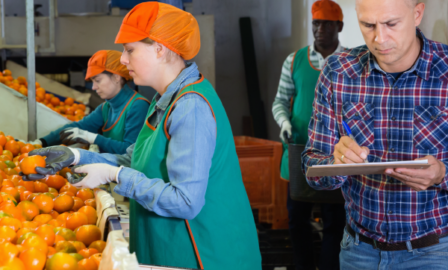The 7 Habits of the Highly Transparent Supply Chain
In the past, food safety has been primarily focused around the prevention of foodborne illness. With increasing consumer awareness and government regulations in the food and beverage industry, the definition of food safety has expanded to include transparency and traceability. One main driver of this change is the trend of personal health and wellness. Consumers want to know what they’re eating and where it comes from. The publication Food Safety News recently performed a study which gave ample support for this growing consumer definition of food safety:
- 51% of consumers want “clear and accurate” labeling;
- 47% of consumers want clear information on ingredients and sourcing; and
- 42% of consumers want fewer overall ingredients and less processing.
Within the consumer products industry, the Quality function is often an afterthought. However, the opportunity to market and claim traceability capabilities as a strategic advantage over competitors has many food organizations investing in new technology and processes.
In research done on how corporations are valued, S&P 500 Companies show that 30 years ago as much as 95% of a company’s value were made up of tangible assets such as machinery, buildings, land and inventory. In 2010, similar research indicated a shift to 20% tangible assets and 80% intangible assets*. So, even for product-based companies, most of their company’s value lies in goodwill, brand recognition and consumer perception. Because of this, maintaining high quality standards is no longer an optional activity.
The challenge becomes how to ensure both quality and transparency while maintaining operational efficiencies. At the heart of this challenge lies the ability to align corporate vision & leadership with process improvement and smart utilization of enabling technologies. FoodLogiQ, a software vendor that offers such a solution, claims that their clients have seen improvements of up to “$1.2 MM savings in annual cost avoidance, and improved trading partner communication.” FoodLogiQ adds that other advantages of a transparent supply chain include increased data quality, increased brand protection, and better compliance with government regulations.
Though the idea of a fully transparent and traceable supply chain may sound daunting, we turn to the expertise of those who have succeeded in this balancing act. In our upcoming session at the GMA Supply Chain Conference, I am pleased to host a discussion with traceability experts from two established food and beverage companies on the 7 Habits of the Highly Transparent Supply Chain. With inspiration from Steven Covey’s, 7 Habits of Highly Effective People, we will discuss how a food and beverage supply chain can attain traceability using a systematic approach.
- Seek first to understand then be understood
- Be proactive
- Begin with the end in mind
- Put first things first
- Think win-win
- Synergize
- Sharpen the saw
We look forward to exploring this concept in more detail at the TPA Conference in San Diego. Subscribe now to our blog to be included on a session recap:
Subscribe to Clarkston's Insights
*Source: The law and the ultimate intellectual asset, Lindsay Moore, published in IAM Magazine, November 2012



